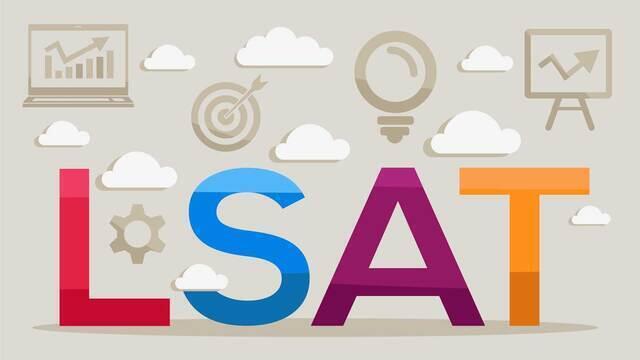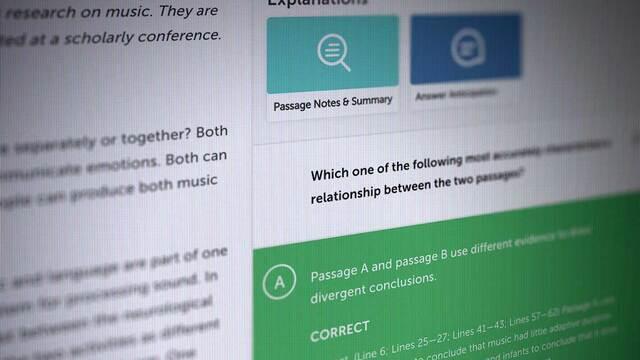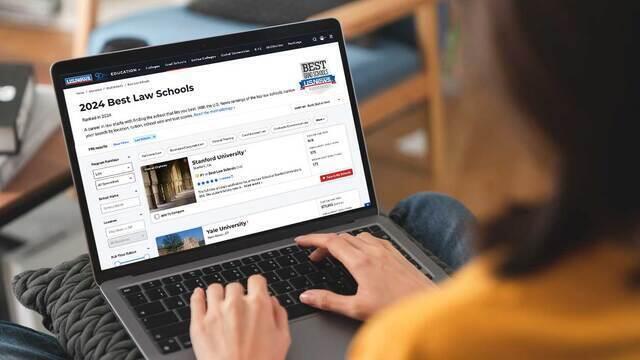If you're anything like the, say, 99% of law-school aspirants for whom the LSAT doesn't come naturally, this has probably happened to you …
You've been dutifully studying for the LSAT and, eventually, it comes time to take a practice test. You take the practice test. You score the practice test. The results aren't what you hoped for. So, you take another practice test. Similar results. So you take another. And another. The same disappointing score appears at the end of each test.
You start to wonder why that same score so consistently appears at the conclusion of an exam, practically taunting you. You wonder if you've maxed out your LSAT capabilities. You feel resigned, defeated, disappointed.
Unfortunately, this all-too-common phenomenon affects most people studying for the LSAT. These patterns are often called "score plateaus." In past webinars, we've discussed some ways to climb yourself out of such a plateau. But LSAT-takers usually earn the same disappointing score on each practice exam because they haven't yet developed an efficient, helpful way to review their practice exams.
In short, these test-takers don't give themselves a chance to improve between practice exams. They don't identify what's going wrong during each exam and don't work on developing their understanding of or approach to the parts of the LSAT that flummox them. So, it's no wonder their score stagnates. They just take practice tests, over and over again, under the false assumption that they can improve their score through these exams.
However, we find that test-takers tend to improve their scores between practice tests. The review and extra practice test-takers get between each exam help students refine their understanding and approaches, ultimately resulting in a higher LSAT score. Practice exams merely mark the progress students make between exams.
So, carefully reviewing your test results will help you avoid this all-too-common plateauing. A sound review system will allow you to uncover critical data about that exam: the questions you're improving on, the ones you still need to work on, and the parts of the exam slowing you down. A sound review system should also help you determine whether you answered the questions correctly because you understood what they were testing and employed an appropriate, reliable strategy. It can also confirm that you answered these questions efficiently — that you didn't take so long to earn that one point that you left other points on the table. And for the questions you answered incorrectly, a sound review system will help you figure out why you were led astray and how to avoid missing a similar question on future exams.
"Blind review" is a popular, effective, and encouraging way to get this type of review. Blind review entails going through an entire practice test a second time after taking the test timed but before looking up the correct answers. When taking the exam a second time, take as much time as necessary to complete the questions. Don't look at your answers or work from the first attempt; try to complete the questions with a fresh perspective. Record the answers you select on the second attempt and compare them to those from the first attempt.
Interested in learning more about blind review? Well, then, we have the webinar for you.
This comparison will provide insight into how reliable your skills are and why you missed certain questions. If you got questions correct in both attempts, you proved that you thoroughly understood that type of question. You didn't answer it correctly because you got lucky. You can expect to get a similar question correct on the real exam.
If you get a question wrong during the first (timed) attempt but correct during the second (untimed) attempt, you probably missed this question due to the exam's time pressure. You can review what you could have done differently on that question to answer the question more efficiently or what you could have done differently on other questions to create more time to solve that question. If your blind review reveals many timing issues, consider timed practice before your next practice test.
If you answered a question correctly on the first attempt but incorrectly on the second attempt, you probably talked yourself out of the correct answer. Most likely, the test-makers put a "trick" in the question that you fell for. You can determine what you think the trick was and how you plan on avoiding falling for it again.
If you got a question wrong on both attempts, you probably misunderstood or misapproached this question. You can review how you misunderstood or misapproached the question type and how you plan on fixing that issue. If your blind review reveals that you misunderstood or misapproached a particular type of question several times, consider going back to your course or your tutor to thoroughly review that question type and any associated concepts.
After completing blind review, you'll need at least one day — but, more likely, between two and five days — getting targeted practice before the next test. This practice will improve your understanding and skills before the next exam.
LSATMax's detailed Analytics page makes it easy to get targeted practice with specific LSAT topics.
The amount of time you'll dedicate to this targeted practice will depend on how big of an improvement you want to make before the next test. The nature of this practice will depend on the data you collected from your blind review. For instance, if you missed a certain Logical Reasoning question type or concept multiple times or if a given Logic Game or Reading Comp passage went worse than usual, you may want to target that type of question, game, or passage by reviewing the relevant approach and getting repeated, untimed practice. On the other hand, if you had difficulty answering questions quickly, you may want to consider changing your approach to reduce the time it takes to answer each question.
This cycle — a timed practice test, blind review, two to five days of targeted practice, repeat — will help you achieve that final goal: consistently earning your target score on practice tests. And once you can do that, there's no reason to doubt that you can earn your target score on the real LSAT.
And now, LSATMax’s testing interface allows you to work through this “blind review” process. Not only can you take 93 officially released LSATs as many times as you’d like, LSATMax accounts now allow you to take any of these exams untimed.
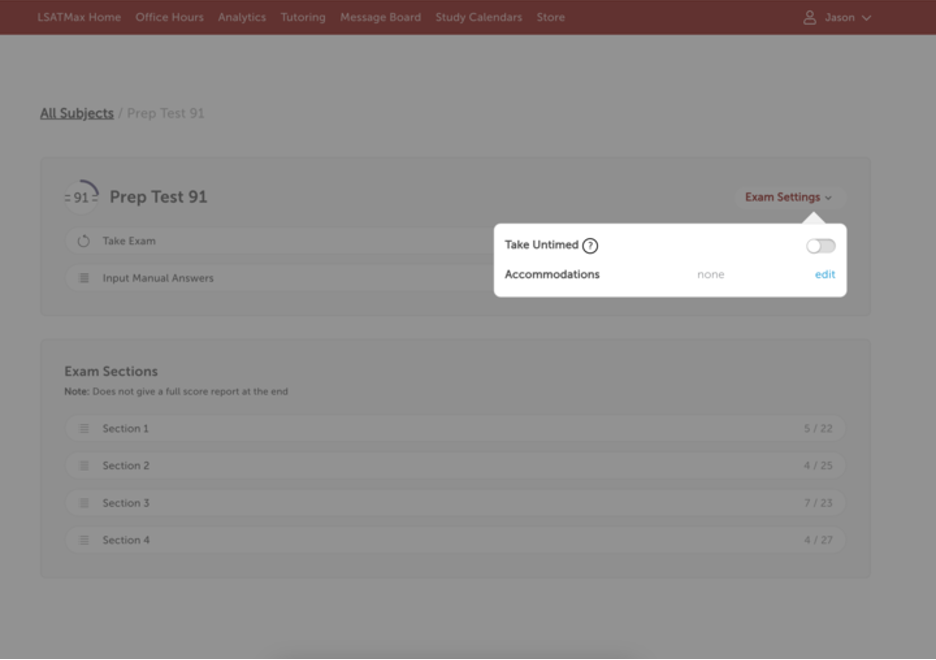
Simply take any test on your LSATMax account under the normal LSAT time constraints, wait a day, and then take the same test again, now untimed. Your LSATMax account will automatically record your selections on both attempts and allow you to see how your score changed.
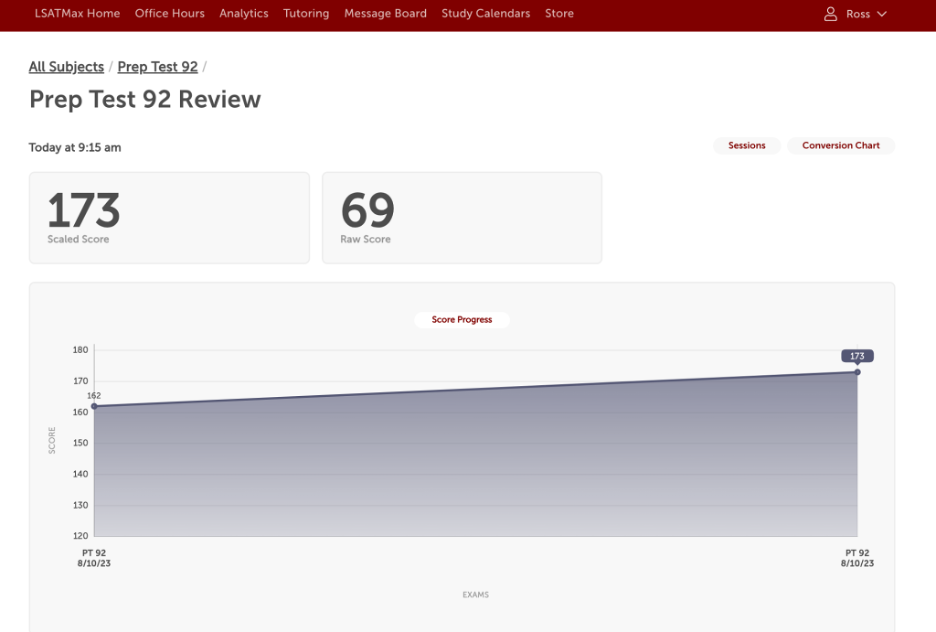
And if you work with one of our 99th-percentile tutors, they can provide you with one of LSATMax’s Blind Review Journal. This Journal will allow you to extract even more specific, actionable information from your practicer test results. Through the Blind Review Journal, your tutor will gain special insight into your thought process as you answered questions on your exam, helping them provide expert guidance on what you can review before your next test. With the assistance of a tutor, the blind review process can be even more efficient and productive, letting you reach your target score more quickly.






